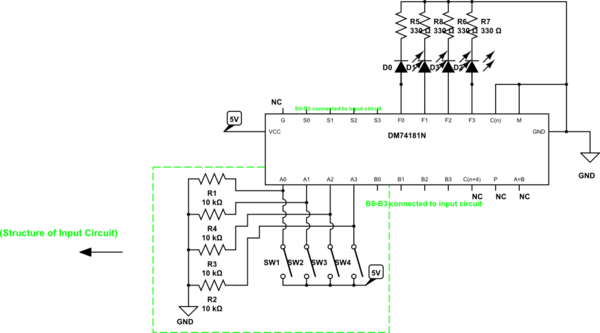I recently built an ALU circuit using the 74181 4 bit ALU. The circuit I built is below:

simulate this circuit – Schematic created using CircuitLab
Please note that the pinout in the datasheet(linked below) is not the same as the pinout in the schematic above. (All pins are shown, but their relative positions aren't the same in the real chip) I am using a 5V 1A power source(measured voltage is 5.08V). No matter what the switches are set to, the output leds are always on. I figure that this has something to do with the way the inputs or outputs are set up. What is(or are) the problem(s) with the circuit. If you need any further details please ask. This is the DM74181 datasheet. (Although the datasheet is for the DM5481 they seem the same).
